“What I noticed,” Chef Scott Conant says, filling my water glass for maybe the third time since I sat down, “was I spent so much time trying to make everybody happy, that I was just miserable.” He smiles as he says it. A fitting contradiction, I suppose, since we’re on the subject of balance, and what that means when pulling eighteen-hour workdays, running multiple businesses and traveling almost ceaselessly—and still being a present husband and father. But still, given how much time Conant has already spent laughing during our conversation at his Los Angeles restaurant, miserable is a rather difficult outfit to imagine the chef wearing.
To me, he appears totally at ease in the mid-city dining room of The Ponte, which is soaked with pre-service, late-afternoon light. He’s casually dressed, leaned back and bearded, wearing buddha bead bracelets and smiling almost perpetually. He’s peripherally aware of his staff and the methodical, meditative serenity before the storm of service—but not looking so concerned that he might have to intervene, or be distracted from our discussion. The food here is Italian—aromas escaping occasionally from the kitchen confirm that—but it’s modern, inflected with the influences of a chef who, over the course of his nearly thirty-year career, has collected flavors from all kinds of cuisines. But the ambiance is entirely L.A., almost surprisingly so, given the fact that Conant is not an L.A. native, or even an L.A. resident.
In fact, Conant grew up about three thousand miles away in Waterbury, Connecticut—an industrial area known for its brass production and Italian population, the latter of which his mother’s family was a part, and is so influential in his cooking style. But to hear an account of his father’s side and the depth of his New England roots, I can’t help thinking he might be about the most American a person can be. The scion of a potato farming family from Maine, he’s a direct descendant of Roger Conant, the man who founded Salem, Massachusetts, (where you can still find a statue of him) and became the first governor of the state.

The food he creates today is pretty worldly, but his early culinary memories are of elemental New England pleasures. “I still have memories of stopping on the road and picking up these potatoes, and just steaming them with a little bit of butter, little bit of sea salt,” he tells me of family road trips, a little wistfully. “They were the best potatoes you’re ever going to have. They were so sweet and tender, and that skin… I remember just the pop of it.”
Conant says his family was always “table-centric,” but he wasn’t especially drawn to a future in food; his culinary education was Plan B when he was denied entry into the plumbing program at a Connecticut vocational school—a serendipitous start to a career that would take him far from New England and well beyond kitchen walls. Since then, Conant has become a celebrated fixture in the food world as a chef and restaurateur—and then a public figure after he helped launch The Food Network’s Chopped as a judge, the juggernaut of the channel’s lineup, with over ten years and four hundred episodes logged.
Much of his work has been centered in New York City, where he moved as an adult, and resided until just last year when he decided he’d had enough winter for one lifetime. “After forty-six years, I really wanted to get off the East Coast. I was done,” Conant says, again with a grin. But he didn’t move to Los Angeles. Instead, Conant, along with his wife (a native of Sheepshead Bay) and their two daughters settled on Scottsdale, Arizona, where the promise of a backyard with a pool, wide open spaces, and warmer weather were enough to lure the longtime New Yorkers away. But it was about more than just weather for Conant; it was about bringing a pulse-pounding career into some sort of balance. “Within three months [of moving], I lost forty points from my blood pressure,” he says.
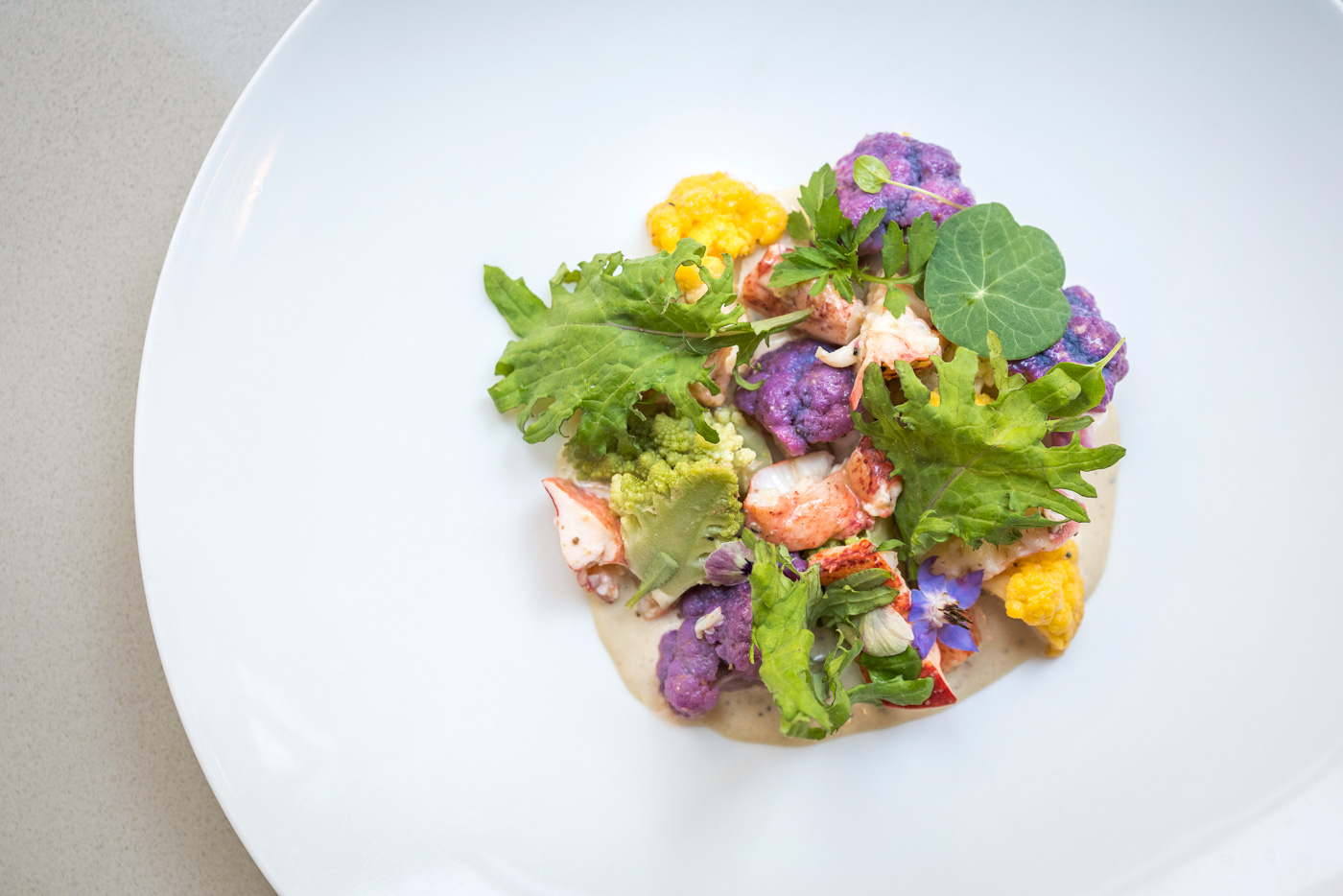
The health benefits were a pleasant side effect, but in talking with Conant, it hardly sounds as if he’s hit the brakes. “I didn’t go [to Arizona] to retire,” he says emphatically. “It wasn’t about slowing down. I probably work more now than I even did.” That seems quite possible when you consider that, in a single year, Conant has opened not one, not two, but three restaurants. And he did it not in one, not two, but three cities––in three very different parts of the country: New York, Los Angeles, and his newly adopted home of Scottsdale.
To pull off a single restaurant opening in a year is cause for a spike in blood pressure for most chefs. A cross-country move can have that effect on any human being. So how is it that Conant managed to do it all, and still sit here with me smiling like he’s on vacation?
——
“Sprezzatura—Google it.” Conant suggests. It’s an Italian term he explains as, “the art of making the elegant look easy.” I do Google it. Definitions include: “Studied carelessness, especially as a characteristic quality or style of art or literature,” from the Oxford English Dictionary. Wikipedia’s explanation is that it originated “from Baldassare Castiglione‘s The Book of the Courtier, where it is defined by the author as ‘a certain nonchalance, so as to conceal all art and make whatever one does or says appear to be without effort and almost without any thought about it.’” Having grown up in an Italian family, it feels like I finally have a word to describe my grandmother’s dinner table, which is always buckling beneath platters of roasted vegetables, hand-rolled meatballs, pasta, and freshly baked bread—all simple looking dishes, although I know she’s been on her feet preparing them since six a.m.
Conant uses the term when talking about his approach to cuisine. “My intention with Italian food has always been to identify a balance between alta cucina and cucina rustica,” he says of the bifurcation between the high-end and the more bucolic.
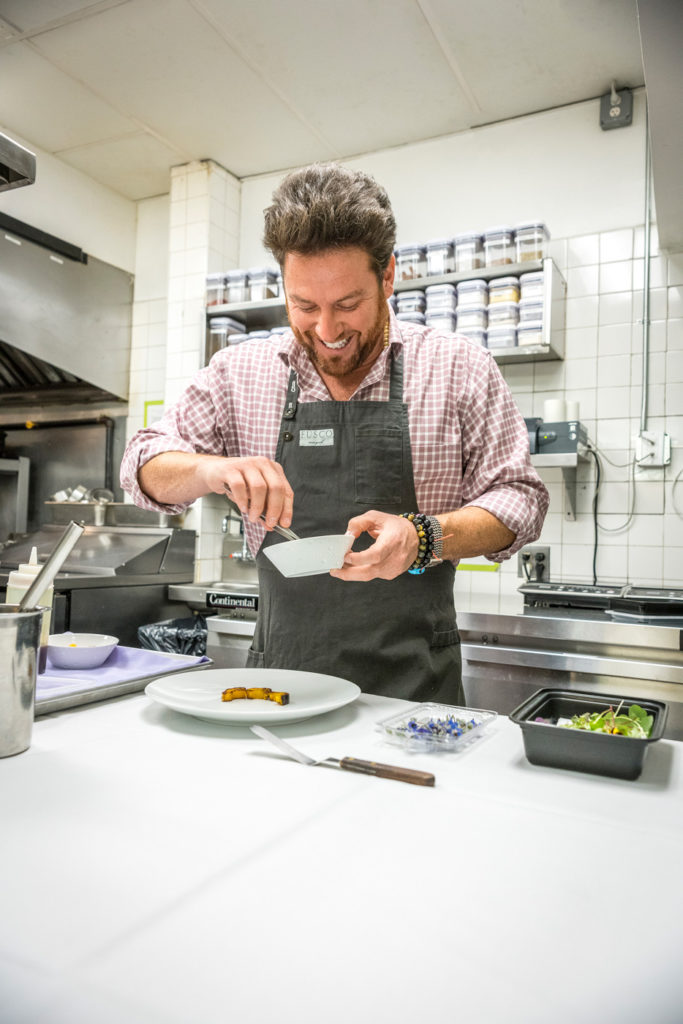
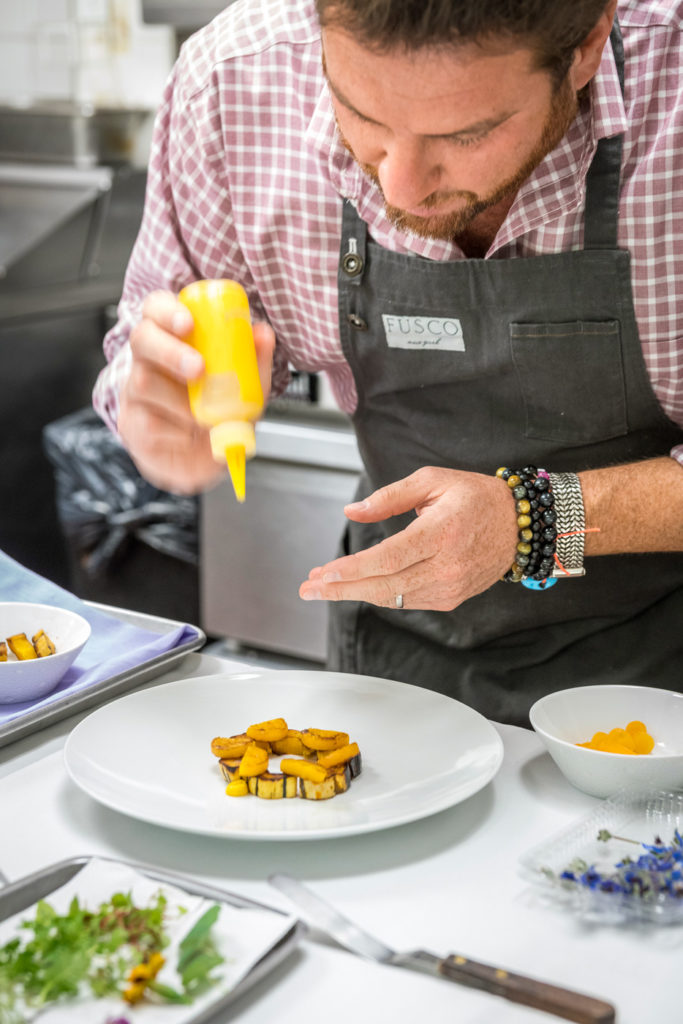
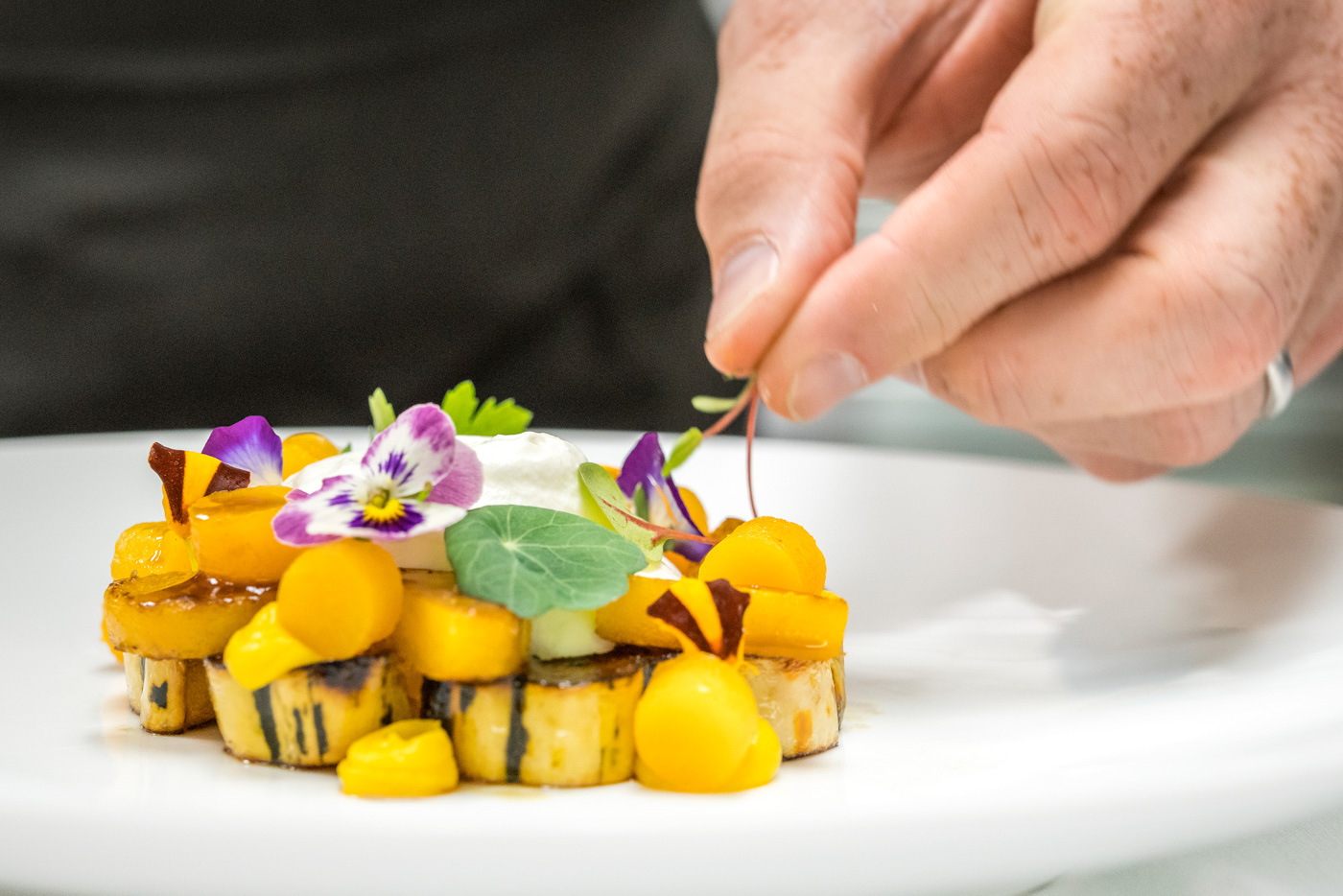
Common culinary vernacular would probably file the rungs on Conant’s restaurant ladder into varying degrees of rustic or refined, approachable or elegant, but he believes within each experience, a little of everything can exist on the same table. Just don’t confuse rustic with déclassé; that the word could be indicative of something unrefined, that something casual can be interpreted as lower quality, is irksome to Conant. “I think sometimes the term rustic is translated to sloppy, and that frustrates me as a chef. I don’t want sloppy and rustic to mean the same thing.”
It’s a singular philosophy—to strike that balance, and make it look easy—but it takes on different personalities depending on where in the country you’re enjoying a Conant experience. The chef isn’t native to any of the cities in which he currently operates restaurants (nor to Italy), so it requires a bit more effort and study to capture the essence of each of these places on the plate—his philosophy is harmony with “the soul of the city,” as he describes it.
When we first meet, I’d recently dined at The Ponte. On a patio gilded by twinkling lights and populated by verdant greenery, a stone’s throw from glamorous stretches of Beverly Hills and West Hollywood, I sat with family and ordered dishes that felt soulfully Italian and simple. A shared salumi platter to start and later, whole branzino served with skin crackling and salsa verde over roasted, melting leeks. In between, plates of pasta pomodoro (a dish on which Conant has built much fame) and duck agnolotti were passed around. There’s a casualty and convivial vibe crossed with food clearly crafted with quality ingredients and care, served graciously, but without a fuss. It’s an intersection that feels distinctly of the current Los Angeles culinary landscape.
By contrast, Fusco, in New York’s Flatiron District, Conant says, “Is a decidedly fine dining restaurant,” while Mora in Scottsdale abides by a further relaxed, osteria model. Their respective cost structures and audiences help him define what makes it to the menu and how the restaurant feels, and each satisfies a different tier that affords Conant a unique creative opportunity.
Check average and vibe aside, Conant says being successful in each market relies on two main factors—chiefly, flavor. Perhaps one city sees a more exotic pasta variation like a tajarin, while in another it may be spaghetti. But both places see throughlines of garlic, olive oil and anchovy. “That flavor profile can work anywhere. How can I make it more luxury, or a little bit less?”
He believes on the spectrum of Italian food—somewhere between cucina rustica and alta cucina—there is a sweet spot for each. “This is a type of food that can go in either direction.” The most obvious case in point is the pasta pomodoro, on all three menus, just as comfortable on the communal tables of Mora as the white linens in Manhattan.
The second factor is equally fundamental, and has long been the foundation upon which the hospitality industry is built: customer satisfaction. “I call it old world hospitality. [It’s about] the service being warm,” he says. “It’s really about making people happy.”
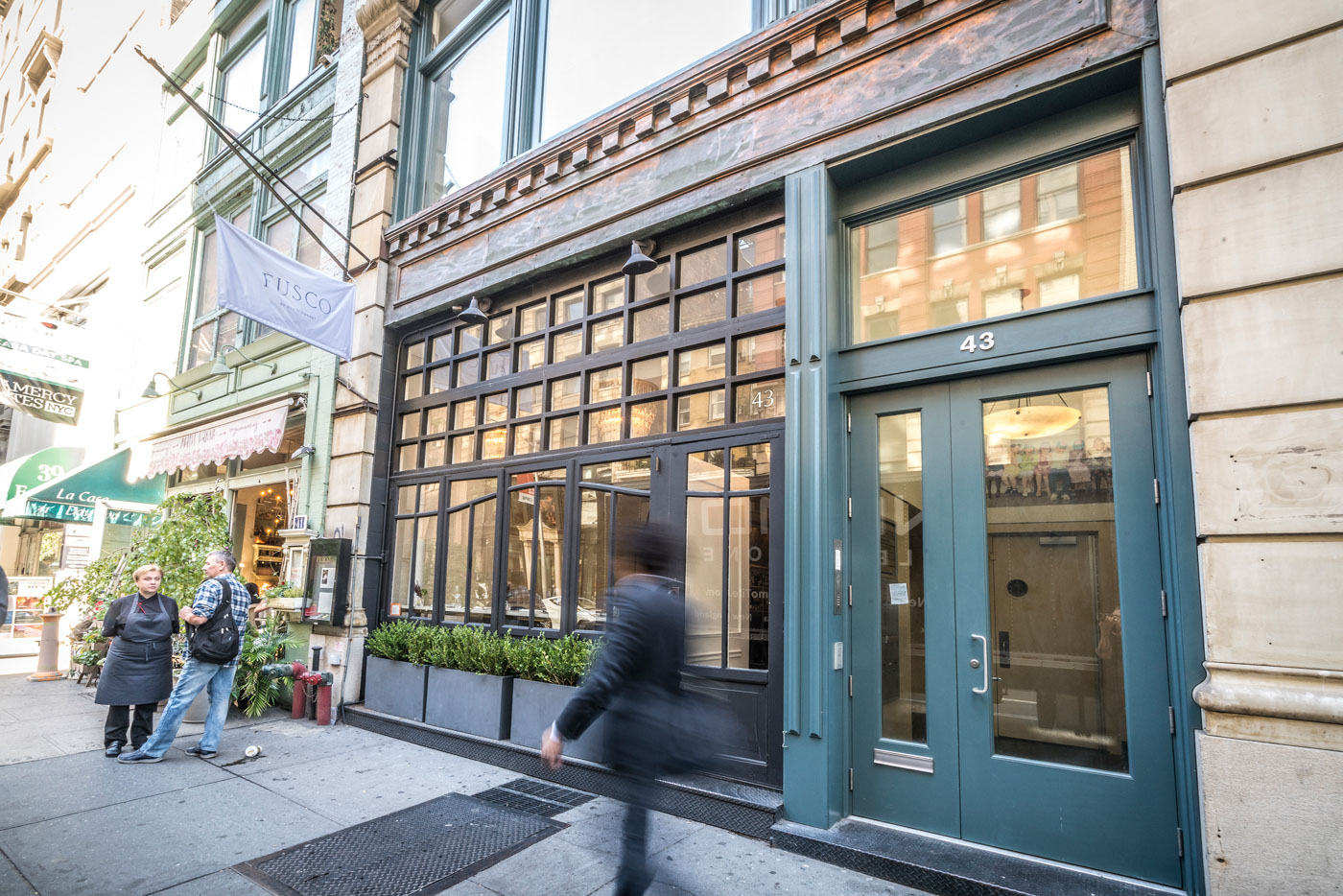


——
It’s a full six months from the time that I enjoy dinner at The Ponte to when I visit Fusco in New York. And it’s been more than a year since Conant occupied a residence in Manhattan, but his spirit hasn’t abandoned the city; you can feel the chef’s energy in the Flatiron space. It’s well-tailored, sharp and suited up, but when “Under the Boardwalk” drifts through the speakers, a breezy New England summer memory creeps to mind—maybe even a little laid back L.A. sensibility in the Manhattan dining room.
When the dishes arrive, it is beneath crystal chandeliers and among diners in sport coats and smart pencil skirts that the full scope between alta cucina and cucina rustica reveals itself. It exists where a dish of couldn’t-be-more-basic pomodoro—curls of basil, a bright, classic tomato sauce and an almost creamy, al dente nest of spaghetti—makes the acquaintance of a luxurious lobster gnudi dotted with briny roe, swimming alongside chunks of lobster meat in a shallow but intense, buttery pink sauce. This is the yin and yang of Conant’s cooking.
Then there’s the middle. At the table’s center, our server has dropped a dish that is at once entirely familiar to me, and yet totally unlike anything I’ve ever seen. A coil of tajarin—rich, egg-based ropes of pasta—is prepared aglio e olio (garlic and oil) with clams, much like a classic vongole sauce. It’s something many Italian-Americans have been eating every Christmas Eve for most of their lives. But this is where Conant seizes an opportunity for flair, adding shard-like bonito, or katsuobushi—the dried, fermented fish flakes common in Japanese cooking—which have definitely never appeared on any iteration of the dish in my memory. “People don’t necessarily associate [bonito] with Italian cooking. For me, it was that umami, that smoky depth and texture when mixed with the pasta.” Dig in and get a tangle of tajarin wrapped around your fork, and it is just as delicious, just as familiar, just as satisfying as any spaghetti vongole served at nonna’s house. But then there’s the bonito flakes—undeniably savory––melting and melding into the dish, and adding a pleasant chew.
But before a bite can be savored, attention must be paid to the theatrics. “It has this cool effect,” Conant tells me, months before I ever lay eyes on the dish. “The heat from the pasta makes the bonito flakes shimmer.” When our server delivers the dish and removes the glass cloche (talk about flair), it is quite a spectacle. The effect is that the pasta appears to be alive—the fish actually kind of dances. It makes it nearly impossible, sitting in a white tablecloth New York restaurant, not to grin like a kid at the performance.
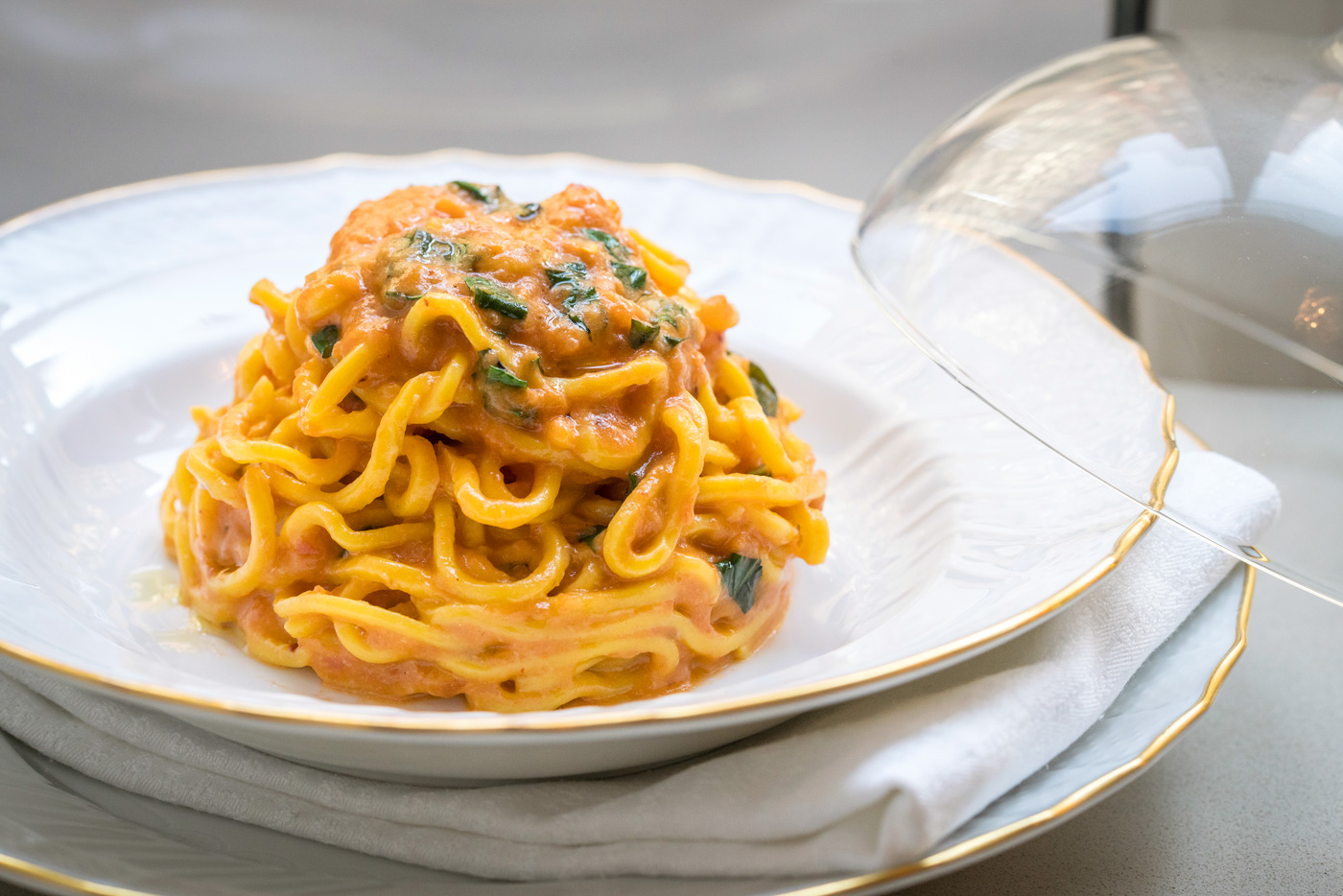
Fusco is inarguably fine dining, but Conant’s food across the board is just fun, and that’s kind of thing makes people come back—and something to which the Italian canon is well-suited, in his evaluation. “The lack of pretense with Italian food is what makes it comfortable for people. There’s a comfort level that people always seem to go back to,” he tells me at The Ponte. I can identify with this feeling, although I always assumed it was because it’s the food of my own heritage. But sitting at Fusco, watching my dining partner—fittingly, an Angeleno transplanted to New York City—genuinely delight in each twirl of pomodoro, I realize this food, regardless of city or background or where you came from or how you were raised, is comforting across the board. It’s homey food. It’s happy food. Perhaps this is his own medicine—part of why Conant himself seems relatively relaxed, even as he helms three new restaurants. Sprezzatura. “Effortless,” says Conant. “The Italians do that very well,” he laughs. So they do.

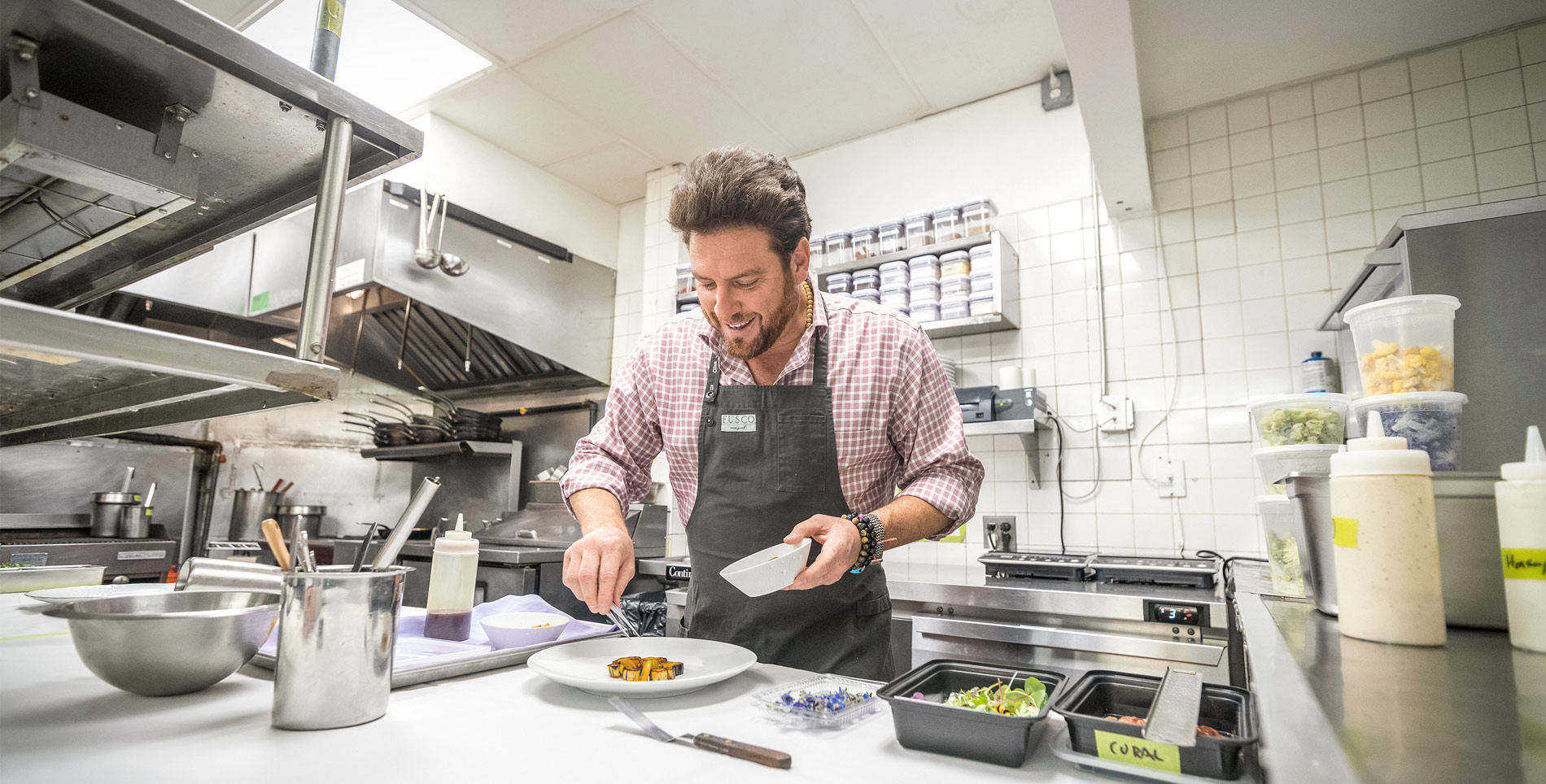

Our comments section is for members only.
Join today to gain exclusive access.